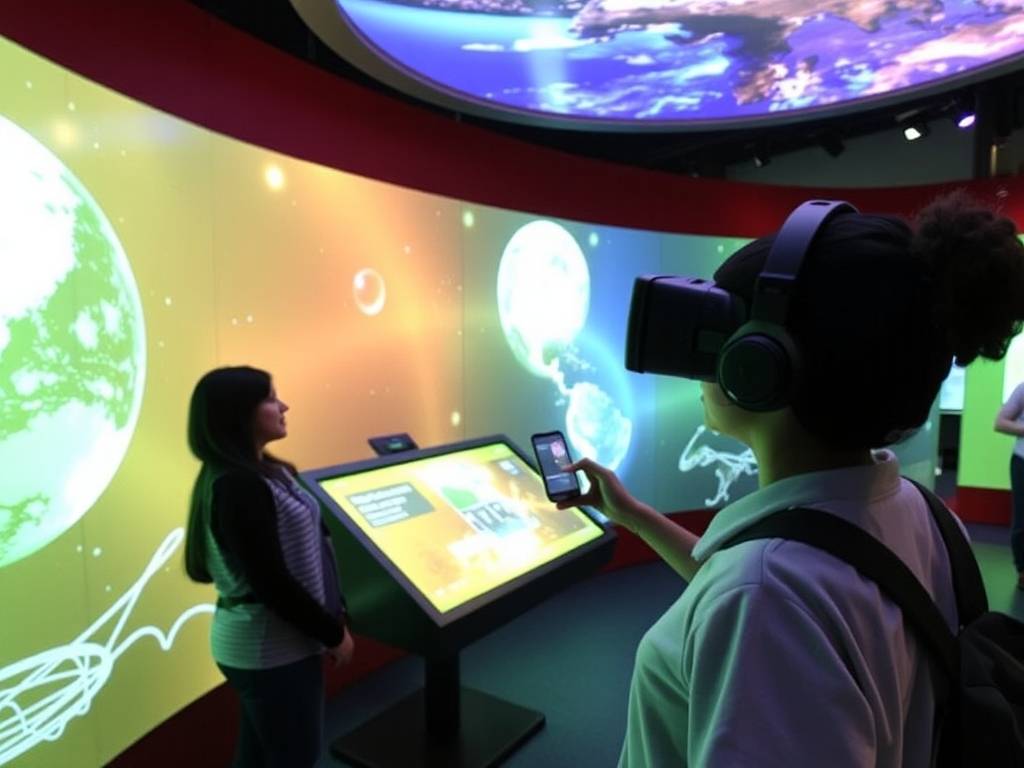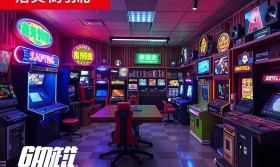Have you ever dreamed of walking through the rings of Saturn, or perhaps shrinking down to the size of an atom to witness the chaotic dance of quantum particles? For generations, the traditional science museum has been a place of wonder, but it has always been constrained by the physical world. You look, you read, you might push a button, but a pane of glass often separates you from the phenomena. Now, imagine a place where those barriers vanish entirely. Welcome to the future of informal education: the Science Museum Simulator VR.
This isn't just a new exhibit; it's a new dimension of learning. By donning a virtual reality headset, visitors are no longer passive observers. They become active participants in the grand theater of science. The sterile glass cases and static diagrams are replaced by immersive, interactive worlds that respond to your every move. The core philosophy here is learning through doing, and in VR, the "doing" is limited only by imagination. This technology is revolutionizing how we engage with complex scientific concepts, making them intuitive, memorable, and profoundly exciting.
So, how does a visit to this virtual science museum work? The process is designed to be seamless and user-friendly, even for those who have never tried VR before.

Your journey begins at the Orientation Hub. Here, you're fitted with a state-of-the-art VR headset and controllers. A friendly, virtual assistant—perhaps a friendly robot or a stylized atom—guides you through the basics of navigation. You learn how to teleport or walk virtually through environments, how to pick up and manipulate objects, and how to access your personal data pad, which will log your discoveries and provide additional information. This short tutorial ensures that everyone, from tech-savvy teenagers to curious grandparents, feels confident and ready to explore.
Once you're comfortable, a grand, holographic menu materializes before you. This is your portal to the exhibits. The menu is organized into several majestic wings, each dedicated to a broad field of science. You might see the Cosmic Exploration Wing, the Nano-Scale Realm, the Human Biology Pavilion, the Evolutionary Timeline, and the Physics Playground. You simply reach out and touch the wing you wish to explore first, and the world around you dissolves and reforms into your chosen adventure.
The true magic of the Science Museum Simulator VR lies in its meticulously crafted interactive exhibits. Let's take a detailed tour through some of the most popular wings.
Stepping into the Cosmic Exploration Wing, the floor beneath your feet disappears, and you find yourself floating in the serene silence of space. In the distance, our solar system spins in all its glory. You can reach out and grab Jupiter, pulling it closer to admire the Great Red Spot, a swirling storm larger than our entire planet. A tap on a virtual icon next to it scales you down, allowing you to stand on the surface of Mars. You watch as a dust devil whips past your feet, and you can use a virtual core sampler to analyze the Martian soil, discovering clues about the planet's watery past.
One of the most breathtaking experiences is the "Stellar Forge." Here, you are given the power of a god. Using your controllers, you gather a cloud of hydrogen gas. Applying pressure and heat, you initiate nuclear fusion with your own hands, feeling a subtle controller vibration as a new star ignites in a blinding flash. You can then fast-forward through its lifecycle, watching it swell into a red giant and eventually collapse, scattering heavy elements across the virtual cosmos—the very elements that make up our world and our bodies.
In the Nano-Scale Realm, the opposite happens. You are shrunk down, with the world transforming into a landscape of molecules. In the "DNA Orchestra" exhibit, a giant, interactive DNA helix floats before you. You can pluck the base pairs like strings on a harp, and each combination produces a different visual and auditory effect, demonstrating how sequences code for different proteins. A mis-pluck can show a mutation, visually explaining genetic disorders in a way a textbook diagram never could.
Another exhibit, "Virus Invader," turns immunology into an engaging game. You are inside a bloodstream, and a virus attempts to dock with a cell. Your job is to quickly assemble the correct antibody shape to block the attachment. It’s a thrilling, hands-on lesson in how our immune system works at a molecular level.
The Human Biology Pavilion is a journey inside yourself. You can step into a beating heart, watching valves open and close with a thunderous lub-dub all around you. You can navigate the intricate folds of a giant brain, lighting up different regions as you touch them to see which parts control motor function, speech, or emotion. In the "Digestive System Slide," you embark on a whimsical yet educational ride from the mouth, down the esophagus, and through the entire digestive tract, all while enzymes break down food around you.
Traveling back in time is a core feature of the Evolutionary Timeline. You can walk through a prehistoric forest, with realistic dinosaurs roaming around you. An exhibit titled "Natural Selection in Action" allows you to control environmental factors. You can introduce a drought and watch how a population of virtual finches evolves different beak shapes over generations. You are not just learning about evolution; you are conducting it and witnessing its effects firsthand.
Finally, the Physics Playground defies the laws of the very physics it teaches—in the most educational way possible. Here, you can adjust the gravitational constant of the universe, making a basketball float lazily to the hoop or fall like a rock. You can build Rube Goldberg machines with endless parts, testing concepts of kinetic and potential energy. In the "Quantum Duality" room, you can fire photons at a double-slit and literally walk around to see how the act of observation changes the result from a wave pattern to a particle pattern, demystifying one of science's most perplexing concepts.
A common question from potential visitors revolves around the practicalities and benefits of such a high-tech experience.
Many wonder about the social aspect. While you are in your own virtual world, the experience is often designed for social learning. Multiplayer modes allow you to see avatars of your friends or family and collaborate on tasks, like building a dinosaur skeleton together or managing a virtual ecosystem. This shared discovery fosters communication and teamwork, turning a solitary activity into a collaborative adventure.
The concern of motion sickness is also valid. The simulators are designed with comfort in mind. The use of teleportation for movement, stable visual horizons, and high frame rates significantly reduce the risk of discomfort. The Orientation Hub is crucial for acclimating users to the virtual environment at their own pace.
Perhaps the most important question is about the educational value compared to traditional methods. The power of VR lies in embodied cognition—the idea that we learn better when our body is involved in the process. By physically performing an action, like fusing a star or blocking a virus, the knowledge is encoded in our memory more deeply. It transforms abstract equations and complex diagrams into tangible, spatial experiences. A student who has stood on Mars will have a fundamentally different understanding of planetary science than one who has only seen a photograph.

For teachers, these simulators offer unprecedented tools. They can create custom lesson plans within the virtual environment, guiding students to specific exhibits and even monitoring their progress and quiz results through a teacher's dashboard. It brings the field trip to every classroom, eliminating geographical and financial constraints.
The technology behind this marvel is as fascinating as the exhibits themselves. It relies on powerful graphics engines to render complex worlds in real-time, precise inside-out tracking to map your movements to the virtual space, and haptic feedback controllers that provide a sense of touch, from the gentle push of a solar wind to the rumble of an earthquake.
Looking ahead, the potential is limitless. Future updates could incorporate augmented reality, overlaying virtual exhibits onto real-world museum floors. Artificial intelligence could power personalized virtual guides that adapt their explanations to a user's age and understanding. The scope could expand to include historical reconstructions, like walking through ancient Rome, or artistic creation in 3D space.
The Science Museum Simulator VR represents a fundamental shift. It moves beyond the model of learning as information transfer to learning as experience. It rekindles the raw wonder of discovery, making science accessible, engaging, and unforgettable. It proves that the best way to understand the universe is not just to read about it, but to step inside and play. So, the next time you have a question about the cosmos, biology, or the forces that shape our world, know that the answer is waiting for you, just a headset away, in a world where you are the scientist.


















